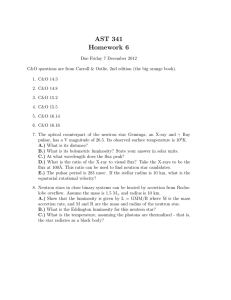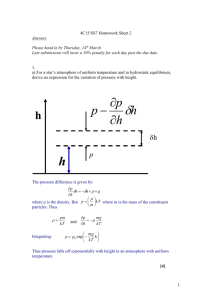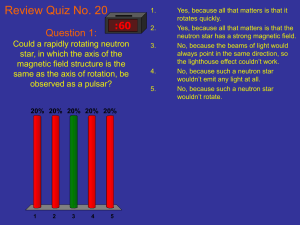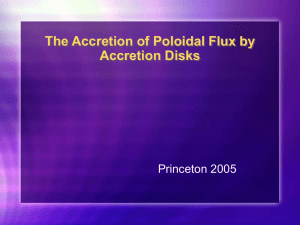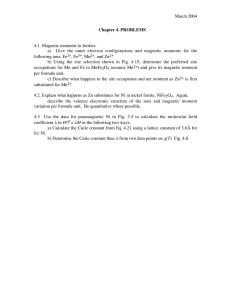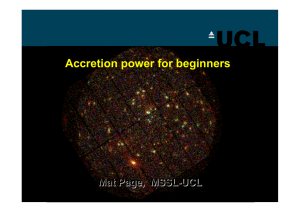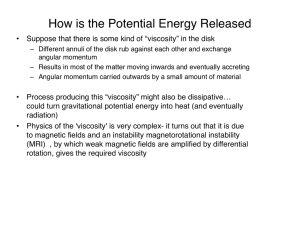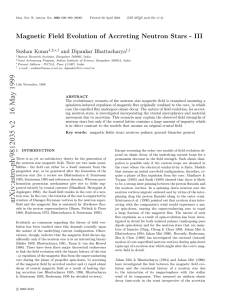Diamagnetic Screening of the Magnetic Field in Accreting Neutron Stars Sushan Konar
advertisement
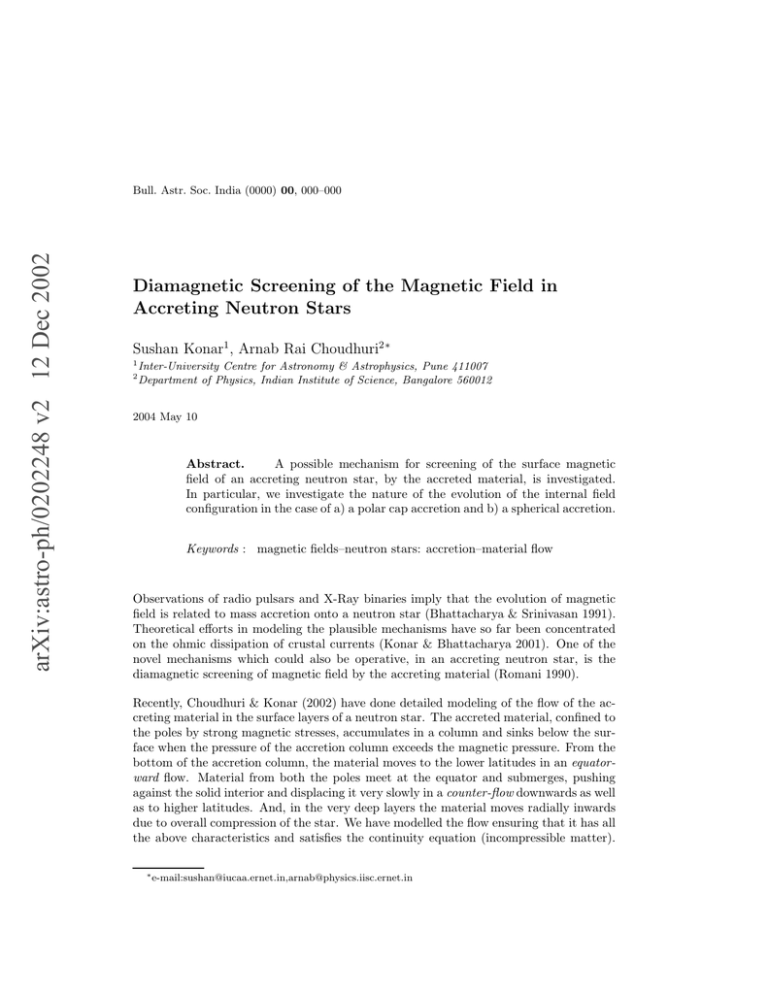
arXiv:astro-ph/0202248 v2 12 Dec 2002 Bull. Astr. Soc. India (0000) 00, 000–000 Diamagnetic Screening of the Magnetic Field in Accreting Neutron Stars Sushan Konar1 , Arnab Rai Choudhuri2∗ 1 2 Inter-University Centre for Astronomy & Astrophysics, Pune 411007 Department of Physics, Indian Institute of Science, Bangalore 560012 2004 May 10 Abstract. A possible mechanism for screening of the surface magnetic field of an accreting neutron star, by the accreted material, is investigated. In particular, we investigate the nature of the evolution of the internal field configuration in the case of a) a polar cap accretion and b) a spherical accretion. Keywords : magnetic fields–neutron stars: accretion–material flow Observations of radio pulsars and X-Ray binaries imply that the evolution of magnetic field is related to mass accretion onto a neutron star (Bhattacharya & Srinivasan 1991). Theoretical efforts in modeling the plausible mechanisms have so far been concentrated on the ohmic dissipation of crustal currents (Konar & Bhattacharya 2001). One of the novel mechanisms which could also be operative, in an accreting neutron star, is the diamagnetic screening of magnetic field by the accreting material (Romani 1990). Recently, Choudhuri & Konar (2002) have done detailed modeling of the flow of the accreting material in the surface layers of a neutron star. The accreted material, confined to the poles by strong magnetic stresses, accumulates in a column and sinks below the surface when the pressure of the accretion column exceeds the magnetic pressure. From the bottom of the accretion column, the material moves to the lower latitudes in an equatorward flow. Material from both the poles meet at the equator and submerges, pushing against the solid interior and displacing it very slowly in a counter-flow downwards as well as to higher latitudes. And, in the very deep layers the material moves radially inwards due to overall compression of the star. We have modelled the flow ensuring that it has all the above characteristics and satisfies the continuity equation (incompressible matter). ∗ e-mail:sushan@iucaa.ernet.in,arnab@physics.iisc.ernet.in 2 Konar and Choudhuri (b) (a) Figure 1. Flow velocity profiles in the region 0 ≤ θ ≤ π/2 and 0.25 ≤ r ≤ 1.0, for - a) a polar cap accretion, b) a more spherical accretion. 1 1 1 0.8 0.8 0.8 0.6 0.6 0.6 0.4 0.4 0.4 0.2 0.2 0.2 0 0 0.2 0.4 (a) 0.6 0.8 1 0 0 0.2 0.4 0.6 0.8 (b) 1 0 0 0.2 0.4 0.6 0.8 1 (c) Figure 2. a) Initial field configuration, assuming a central dipole. b) & c) are evolved configurations corresponding to velocity profiles of Fig.1a and Fig.1b. In Fig.1 we show the profile of this velocity flow (a) for a low rate of accretion (polar cap accretion) and, (b) for a higher rate of accretion, (more towards spherical accretion). Now, this accreted material, flowing horizontally from the polar caps, drags the magnetic field lines with it because of ’flux-freezing’ resulting in the distortion of the original field structure. This distortion gives rise to an effective screening of the observable field over a time-scale of the material flow. Assuming an initial central dipolar configuration for the field (Fig.2a) we show the final field configurations (obtained by solving the induction equation in 2-D) in Fig.2b & Fig.2c corresponding to the two velocity profiles of Fig.1. Details of these calculations can be found in Konar & Choudhuri (2002). References Bhattacharya, D. and Srinivasan, G., 1991, In Ventura, J. and Pines, D., editors, Neutron Stars: Theory and Observation, page 219, Kluwer Academic Publishers, Dordrecht. Choudhuri, A. R. and Konar, S., 2002, MNRAS, 332, 933 Konar, S. and Bhattacharya D., 2001, In Kouveliotou, C. et al, editors, The Neutron Star Black Hole Connection, page 71, Kluwer Academic Publishers, Dordrecht. Konar, S. and Choudhuri, A. R., 2002, in preparation Romani R. W., 1990, Nat, 347, 741
